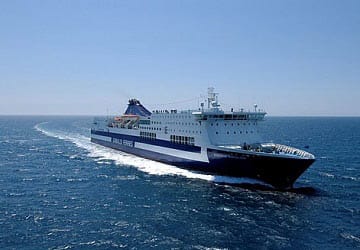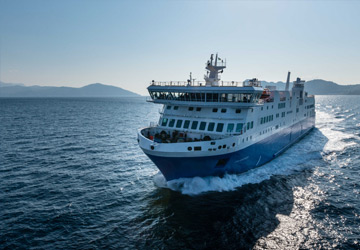
-
Recent Searches
Recent Searches
- Travel Alerts
- My Account
- Customer Service
-
United Kingdom
Tunis to Civitavecchia Ferry
The Tunis Civitavecchia ferry route connects Tunisia with Rome and is currently operated by 2 ferry companies. The Grandi Navi Veloci service runs up to 1 times per week with a sailing duration of around 25 hours while the Grimaldi Lines service runs up to 1 times per week with a duration from 18 hr 30 min.
So that’s a combined 2 sailings on offer per week on the Tunis Civitavecchia route between Tunisia and Rome. Compare now and get the best fare at the time that you want to travel.
Tunis to Civitavecchia Ferry Alternatives
-

-
Get price
-
-

-
Get price
-
-

-
Get price
-
Tunis - Civitavecchia Ferry Operators
-
- 1 Sailing Weekly 25 hr
- Get price
-
- 1 Sailing Weekly 18 hr 30 min
- Get price
Average Tunis Civitavecchia Prices
Prices shown represent the average one way price paid by our customers. The most common booking on the Tunis Civitavecchia route is a car and 1 passenger.
Tunis Civitavecchia Ferry reviews
-
"normal trip"
A reallu normal trip
'Rami' travelled Tunis Civitavecchia with Grandi Navi Veloci on Excellent
Read More Read Less -
"thieves"
you are thieves and liars. Never again
'Hamza' travelled Tunis Civitavecchia with Grimaldi Lines on Zeus Palace
Read More Read Less -
"Minimal service"
At that price, you cannot complain. However, there are not enough toilets per floor and those toilets are not cleaned often enough. Some passengers really lack of manners, lay down on 4 seats instead of one, eat or smoke everywhere. Nothing is done about that. The crew only speaks Italian. Moreover it was 2 hours late for the outbound journey (ok) and 8h for the inbound journey. The meal was not good and very difficult to digest. I would recommend this ferry to a friend, if they are prepared to accept some inconvenients.
'Mohamed-amine' travelled Tunis Civitavecchia with Grimaldi Lines on Zeus Palace
Read More Read Less -
"Always late"
Sadly the usual lateness was even worse this time, even though lots was made up for during the crossing. The crossing started 5 hours late and we ended up arriving 2 hours late. Cabins are ok, cleansiness not very good.
'Eva' travelled Tunis Civitavecchia with Grandi Navi Veloci on Splendid
Read More Read Less
Tunis Guide
Tunis is the largest city in Tunisia and its capital and is located on a large Mediterranean Sea gulf, the Gulf of Tunis, behind the Lake of Tunis and the port of La Goulette. The UNESCO World Heritage Site of Carthage, perhaps one of the most important archaeological sites ever found, is located around 12 km from Tunis. Many artefacts and the site of the ancient city have been unearthed including early Punic artefacts and Roman, Byzantine and Vandal buildings. The city has an eclectic mix of architectural styles, wide streets and narrow alleyways that are sometimes criss-crossed by tramways.
Although the old stone walls of the 9th century Medina no longer exist but the narrow streets, mosques, souks and historic structures remain and have also been declared a UNESCO World Heritage Site. There are a number of festivals held in the city each year the largest being the Carthage International Festival which takes place during July and August. The festival, which was established in 1964, attracts visitors from around the world and much of it is held in the old amphitheatre of Carthage and hosts performances by singers, musicians, actors, dancers and shows films on outdoor screens.
Civitavecchia Guide
The Italian city of Civitavecchia lies on the Tyrrhenian Sea coast in the Lazio region of the country. The city, which is home to just under 60,000 residents, is home to a cruise and ferry port and is located around 80 km to the north west of Rome. The city can trace its port's history back over one thousand years to 101-108 AD, when the Emperor Trajan ordered the port of Centumcellae to be built in order to accommodate deepwater shipping for the Roman capital. After this period, they fell under the rule of a number of different Counts and Popes.
In the city visitors will find examples of restored medieval and Baroque structures which includes the large Forte Michelangelo which is a fortress that was commissioned by pope Giulio II in the early 16th century and the 17th century defensive walls behind the port. The wall forms one side of the Lungoporto Gramsci which is an elevated pedestrian walkway. From here there are excellent views to be had of the cruise ships and ferry basins in the port.
Car and passenger ferries link Civitavecchia to Sardinia, Sicily, and other destinations within Italy and abroad.




